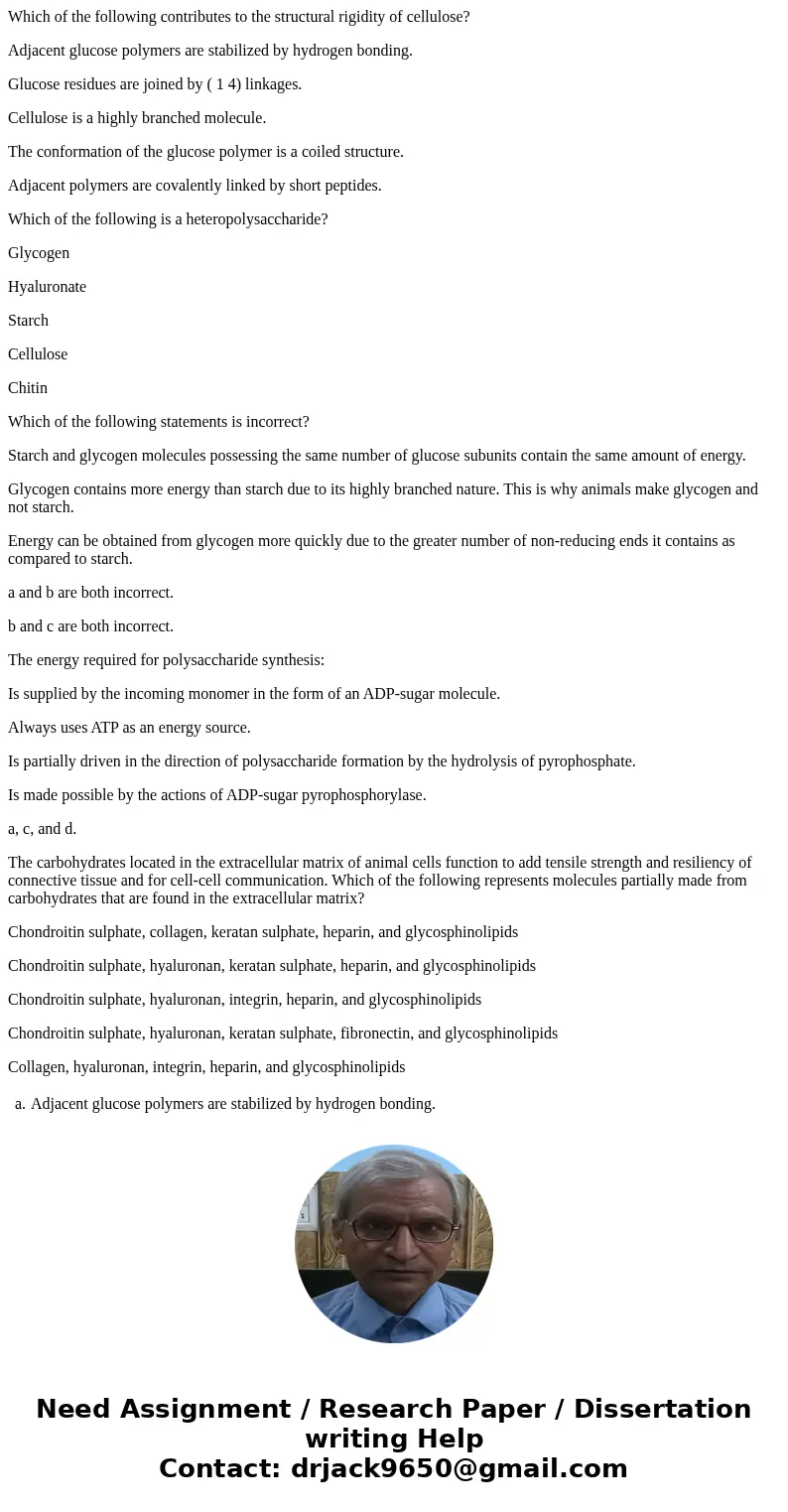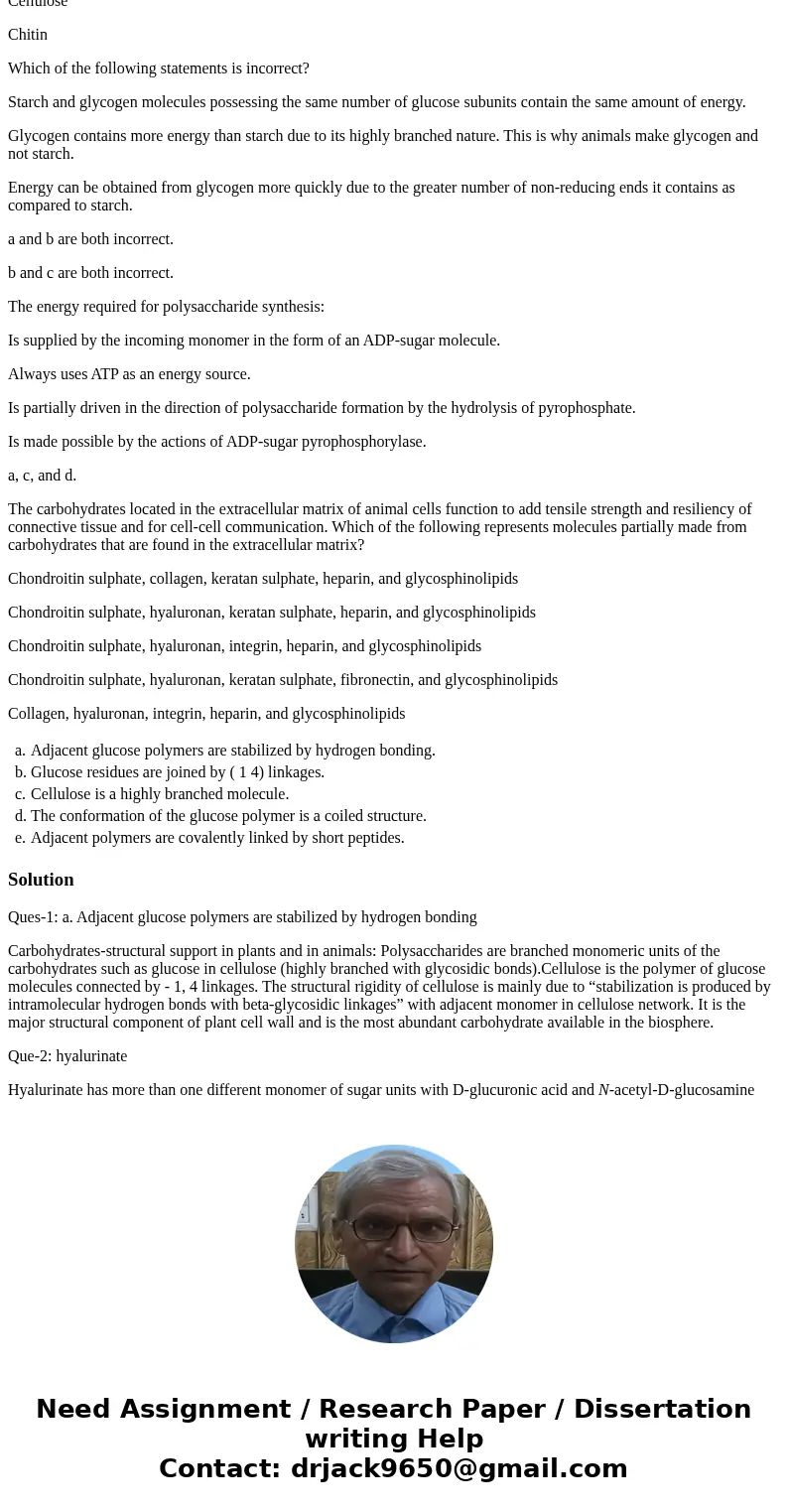Which of the following contributes to the structural rigidit
Which of the following contributes to the structural rigidity of cellulose?
Adjacent glucose polymers are stabilized by hydrogen bonding.
Glucose residues are joined by ( 1 4) linkages.
Cellulose is a highly branched molecule.
The conformation of the glucose polymer is a coiled structure.
Adjacent polymers are covalently linked by short peptides.
Which of the following is a heteropolysaccharide?
Glycogen
Hyaluronate
Starch
Cellulose
Chitin
Which of the following statements is incorrect?
Starch and glycogen molecules possessing the same number of glucose subunits contain the same amount of energy.
Glycogen contains more energy than starch due to its highly branched nature. This is why animals make glycogen and not starch.
Energy can be obtained from glycogen more quickly due to the greater number of non-reducing ends it contains as compared to starch.
a and b are both incorrect.
b and c are both incorrect.
The energy required for polysaccharide synthesis:
Is supplied by the incoming monomer in the form of an ADP-sugar molecule.
Always uses ATP as an energy source.
Is partially driven in the direction of polysaccharide formation by the hydrolysis of pyrophosphate.
Is made possible by the actions of ADP-sugar pyrophosphorylase.
a, c, and d.
The carbohydrates located in the extracellular matrix of animal cells function to add tensile strength and resiliency of connective tissue and for cell-cell communication. Which of the following represents molecules partially made from carbohydrates that are found in the extracellular matrix?
Chondroitin sulphate, collagen, keratan sulphate, heparin, and glycosphinolipids
Chondroitin sulphate, hyaluronan, keratan sulphate, heparin, and glycosphinolipids
Chondroitin sulphate, hyaluronan, integrin, heparin, and glycosphinolipids
Chondroitin sulphate, hyaluronan, keratan sulphate, fibronectin, and glycosphinolipids
Collagen, hyaluronan, integrin, heparin, and glycosphinolipids
| a. | Adjacent glucose polymers are stabilized by hydrogen bonding. | |
| b. | Glucose residues are joined by ( 1 4) linkages. | |
| c. | Cellulose is a highly branched molecule. | |
| d. | The conformation of the glucose polymer is a coiled structure. | |
| e. | Adjacent polymers are covalently linked by short peptides. |
Solution
Ques-1: a. Adjacent glucose polymers are stabilized by hydrogen bonding
Carbohydrates-structural support in plants and in animals: Polysaccharides are branched monomeric units of the carbohydrates such as glucose in cellulose (highly branched with glycosidic bonds).Cellulose is the polymer of glucose molecules connected by - 1, 4 linkages. The structural rigidity of cellulose is mainly due to “stabilization is produced by intramolecular hydrogen bonds with beta-glycosidic linkages” with adjacent monomer in cellulose network. It is the major structural component of plant cell wall and is the most abundant carbohydrate available in the biosphere.
Que-2: hyalurinate
Hyalurinate has more than one different monomer of sugar units with D-glucuronic acid and N-acetyl-D-glucosamine


 Homework Sourse
Homework Sourse